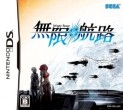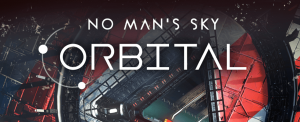Review: Infinite Space
Posted 13 Apr 2010 at 13:55 by Aaron Clegg
DS Review

| "Once the game gets into its pace and gives you full control over the thrusters, it's apparent that Infinite Space is no standard JRPG fare..." |
You won't have played Infinite Space. It's very likely you won't have even considered buying it. We say that with depressing confidence; knowing that it's a quirky, Japanese RPG from a team largely notorious for a back-catalogue of commercial bombs (fragment grenades, if we're generous), on a platform hardly famed amongst the mainstream for its massively in-depth experiences. Yet however cult the game is doomed to be, it doesn't detract from the fact that Infinite Space could very well be one of the best DS offerings of 2010.
Infinite Space is a Japanese-flavoured RPG at its core, but if like many you've acquired a jaded view on a genre that has become more and more relied on flashy, but ultimately linear structuring, you'll do well to have faith in Platinum Games' latest offering. Sure, all seems typical in the world of JRPG as you take the role of Yuri – an orphaned misfit who lives on a planet ruled by a repressive leader and dreams of exploring space. After some establishing plot filling, you'll soon find yourself in command of your own space ship, thrust into a long quest that deals in inter-system politics, ruthless space pirates and a race to unlocking the mysteries of strange artefacts known as Epitaphs. Oh, and the universe also has its very own (and surprisingly versatile) swear word in the form of "Grus", though we don't quite see it catching on in the same way as... smeg.
But once the game gets into its pace and gives you full control over the thrusters, it's apparent that Infinite Space is no standard JRPG fare. Puny butter knifes and too-tired magic spells? No. This game gives you galactic-hopping battleships to form your party. Battles are relatively simple once you get a grip on things, but there are a pleasingly robust number of factors you need to take advantage of if you're going to survive these pirate-infested stars. Battles take place in real-time, and you control your fleet's velocity on a 2D plane to alter its distance from enemy ships. Pull right back, and you'll be out of range of fire, but you need to place yourself close enough to ensure the accuracy of your own weapons.


Attacking relies on the Command Gauge – similar to the ATB (Active Time Battle) system seem in the Final Fantasy series. When it recharges to the green level, you can select 'Dodge'; to the yellow level, you can select a Normal attack; and when it gets all the way up to the red level, you can unleash a Barrage. If you choose Dodge, you will stay in that state until you select another command. A Dodge state will render an enemy Barrage effectively useless, but if you sustain a Normal attack, it increases the chances of suffering critical hits. You never know what move your opponent is going to make; only what colour their own Command Gauge is at. For this reason, a certain amount of foresight and luck is seemingly needed in the tougher battles, and new players are doomed to die many deaths in the first couple of hours. However, there is little in the world more satisfying than pre-emptively dodging an enemy barrage before unleashing your own hellish wrath of white-hot laser and missile destruction.
The combat system continues to unfold around ten hours in when you get the opportunity to carry around short-range fighter ships to whittle down the armour of enemy fleets. It should be noted that before this happens though, you also get to perform the 'Melee' command, which lets you board enemy ships and engage in hand-to-hand combat. This is the one real damp squib of the whole combat system, which works like a sort of real-time version of Rock, Paper, Scissors that relies totally on luck (although I should concede I have spoken to some who say they found Melee fights to be the easiest aspect of the game – Ed). You won't want to board enemy ships to take advantage of this, but it's a shame there are some set-pieces where Melee fights are compulsory, as they really are nowhere near as compelling as the genuinely strategic ship battles.
But unequivocally, the meat of Infinite Space comes from the near-infinite number of ways you can tweak your fleet. Indeed, your ties to the characters of the game (of which there are over a hundred) become sidelined as you grow an attachment to the inanimate space ships which essentially are the centre-focus of the entire gameplay. By collecting the scores of blueprints dotted about the game, you can equip your ships with all types of deadly weaponry, from short-range missiles to massive laser cannons. But the deepest aspect of customisation comes from how you choose to lay-out 'modules' (rooms, basically) in your ships' interiors. Your crafts are limited in size, so you'll have to be strategic about what you install. You can equip generators to boost your shields, improve weapon accuracy and increase your cruising speed, but this is just a tiny part of what you can tweak. You'll want to put in some basic amenities to increase 'liveability', which in turn decreases the rate your crew becomes fatigued; and a tired crew means a sluggishly recharging Command Gauge.


And then there is your crew itself. The world of Infinite Space is vast, and on the epic journey, you'll come across dozens of characters with their own backstory who will join your fleet. You can choose to place them in a variety of different positions around your ship, from artillery chiefs and radar monitors to research and development - even head chef. By making the best use of each character's individual skills in this way, you can make a massive difference to the efficiency and power of your fleet. It's already been mentioned that Infinite Space can initially seem a very difficult game, but you'll come to learn that the multitude of ways in which you customise everything about your fleet will be the key to transforming you from a space rookie to the most powerful captain in the galaxy.
For its colossal depth thanks to the customisation aspect, Infinite Space is an aptly named title that pushes the DS hardware to its limits in more ways than is obvious; its production values run deeper than the impressive 3D visuals and heavy use of voice work. It's not without fundamental flaws – it's sometimes difficult to determine exactly where to head next, even with the fairly linear structure of the main quest – but it's hard for stat-lovers not to get utterly engrossed in refining every little detail of your fleet.
Infinite Space is a game you won't have played, but there's no real reason for gamers to pass up on it. Words like "epic", "hardcore" and "engrossing", whilst accurate, still sound very much like marketing-speak, yet crucially, the game on the whole is so addictive that its appeal really does supervene anything that can be said about it on paper. We highly recommend you take the plunge to infinity, so long as you're prepared to be overwhelmed to the point of humility and shame.
N-Europe Final Verdict
A real surprise, but that maybe our own fault for being doubters. Infinite Space is a fresh RPG not afraid to try new things, that will overwhelm players like a supermassive black hole...
- Gameplay4
- Playability4
- Visuals4
- Audio4
- Lifespan5
Final Score
8
Pros
Massive depth in customisation
Epic, twisting quest
Addictive realtime ship battles
Pleasingly difficult
Cons
Melee battles
Some signposting issues























